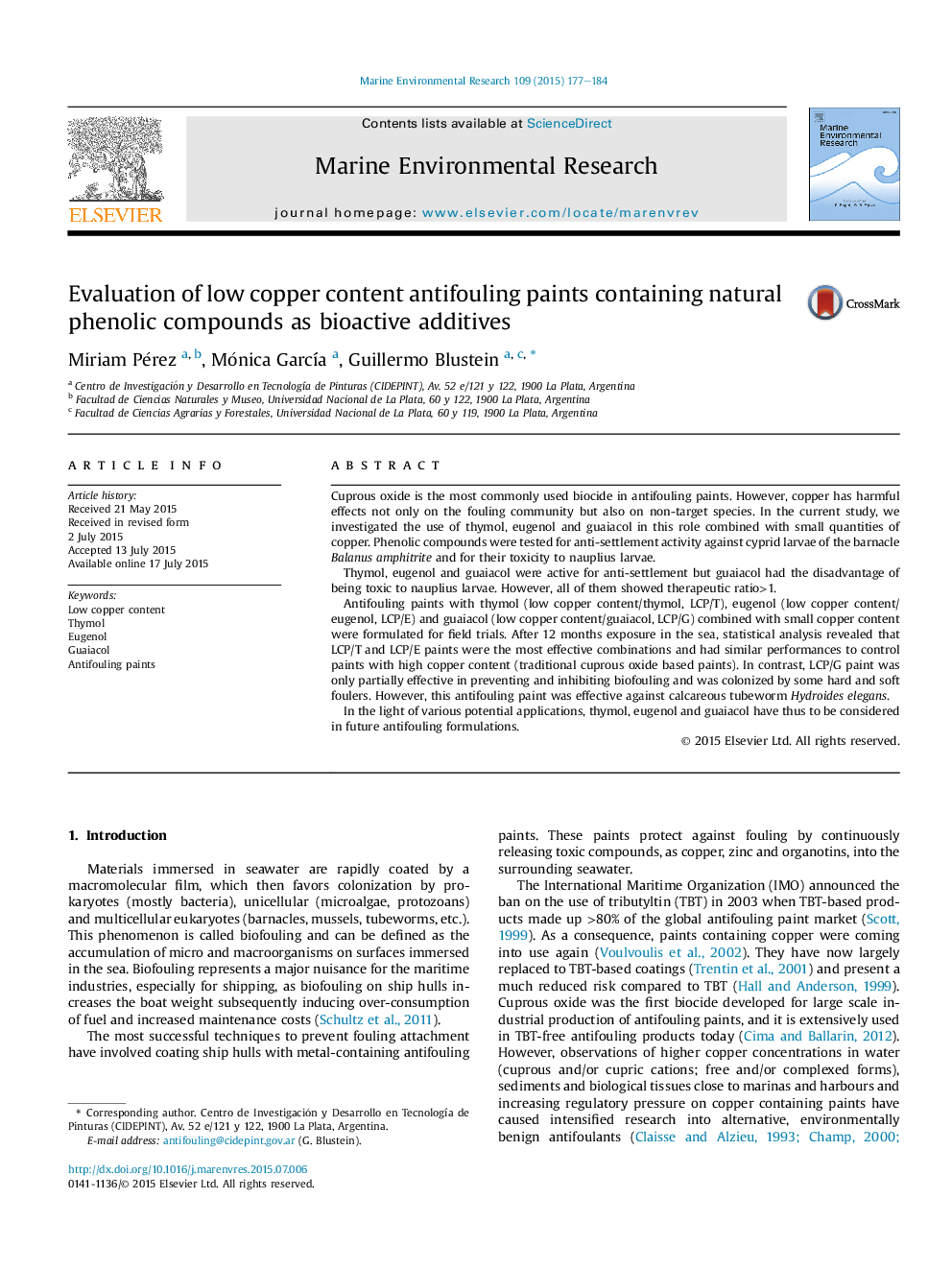| کد مقاله | کد نشریه | سال انتشار | مقاله انگلیسی | نسخه تمام متن |
|---|---|---|---|---|
| 6387749 | 1627573 | 2015 | 8 صفحه PDF | دانلود رایگان |
- Antifouling activity of phenolic compounds were estimated by laboratory tests.
- Performance of low copper content coatings with phenolic compounds was evaluated.
- Paints with thymol or eugenol exhibited more promising results against biofouling.
- This research propose a drastically reduction of copper in antifouling paints.
Cuprous oxide is the most commonly used biocide in antifouling paints. However, copper has harmful effects not only on the fouling community but also on non-target species. In the current study, we investigated the use of thymol, eugenol and guaiacol in this role combined with small quantities of copper. Phenolic compounds were tested for anti-settlement activity against cyprid larvae of the barnacle Balanus amphitrite and for their toxicity to nauplius larvae.Thymol, eugenol and guaiacol were active for anti-settlement but guaiacol had the disadvantage of being toxic to nauplius larvae. However, all of them showed therapeutic ratio>1.Antifouling paints with thymol (low copper content/thymol, LCP/T), eugenol (low copper content/eugenol, LCP/E) and guaiacol (low copper content/guaiacol, LCP/G) combined with small copper content were formulated for field trials. After 12 months exposure in the sea, statistical analysis revealed that LCP/T and LCP/E paints were the most effective combinations and had similar performances to control paints with high copper content (traditional cuprous oxide based paints). In contrast, LCP/G paint was only partially effective in preventing and inhibiting biofouling and was colonized by some hard and soft foulers. However, this antifouling paint was effective against calcareous tubeworm Hydroides elegans.In the light of various potential applications, thymol, eugenol and guaiacol have thus to be considered in future antifouling formulations.
Journal: Marine Environmental Research - Volume 109, August 2015, Pages 177-184
